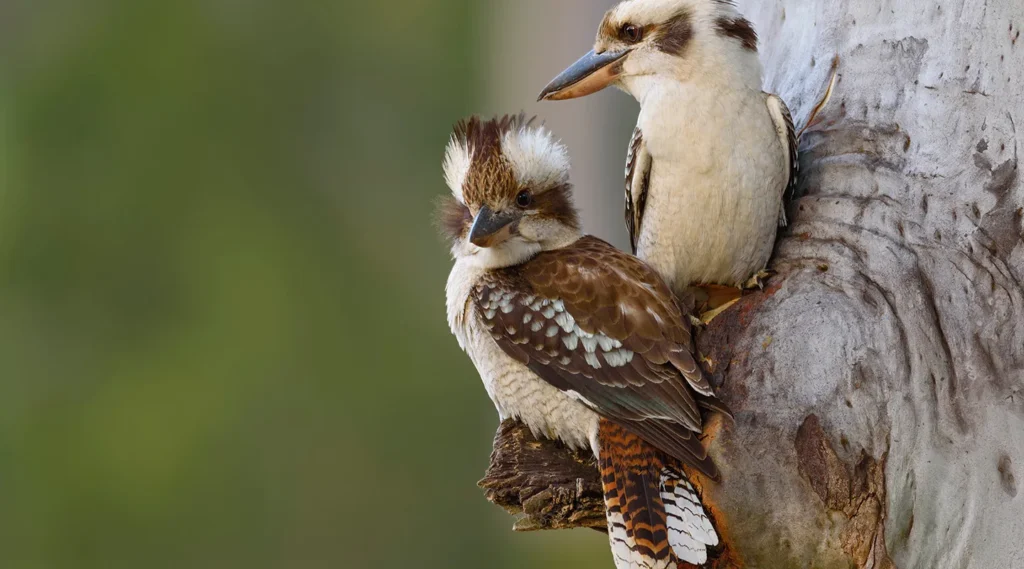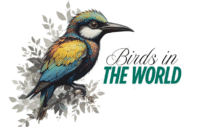The Kookaburra’s Laugh, a rollicking, chuckle-like call, echoes through Australia’s urban mornings, transforming city parks into vibrant soundscapes. Native to Australia’s woodlands, the kookaburra, particularly the laughing kookaburra, has become a beloved fixture in cities like Sydney and Brisbane, where its infectious vocalizations greet dawn with exuberance. This iconic bird’s call, often mistaken for a jungle sound in films, is more than a quirky noise—it’s a cultural treasure and ecological signal. This article explores the Kookaburra’s Laugh, delving into its biology, urban presence, and enduring charm in Australia’s cityscapes.

The Joyful Sound of the Kookaburra’s Call
Anatomy of a Chuckle
The Kookaburra’s Laugh is a distinctive, throaty call that blends cackles, hoots, and rolling laughter, produced by the laughing kookaburra’s specialized syrinx. Males and females duet, creating a chorus that can carry over a kilometer, especially at dawn or dusk. For example, this vocalization serves multiple purposes: marking territory, bonding with family, and signaling group unity. The call’s complexity, with rising and falling notes, makes it instantly recognizable, delighting urban residents and birdwatchers alike.
Why It Sounds Like Laughter
The Kookaburra’s Laugh earned its name from its uncanny resemblance to human laughter, a trait that has made it a global sound effect in movies and cartoons. This perception stems from the call’s rhythmic, upbeat cadence, which conveys cheerfulness. However, the laugh is primarily a territorial signal, often performed by family groups to ward off rivals. Its joyful tone has cemented the kookaburra’s status as a symbol of Australia’s vibrant wildlife, resonating in both rural and urban settings.
Urban Life of the Laughing Kookaburra
Thriving in Cityscapes
The laughing kookaburra, with its stout beak and brown-streaked plumage, thrives in Australia’s urban environments, from Melbourne’s suburbs to Perth’s parklands. These birds perch on power lines and eucalyptus trees, using their keen eyesight to hunt. For instance, they’ve adapted to city life by nesting in tree hollows or even building eaves, showcasing remarkable resilience. The Kookaburra’s Laugh rings out in places like Sydney’s Centennial Park, where urban green spaces provide ideal habitats.
Diet and Foraging in Cities
Kookaburras are carnivorous, feasting on insects, small reptiles, and even the occasional sausage from a barbecue. In urban areas, they swoop down to snatch worms from lawns or raid picnic scraps, earning a reputation as bold opportunists. As a result, their diet flexibility supports their urban success, though human feeding can disrupt natural foraging. The Kookaburra’s Laugh often signals feeding time, alerting family members to a fresh catch, a behavior that fascinates city observers.
Cultural Significance of the Urban Chuckle
A National Icon
The Kookaburra’s Laugh is woven into Australia’s cultural fabric, inspiring songs, children’s rhymes, and even a famous 1930s folk tune. It’s a sound synonymous with the Australian bush, yet equally at home in cities, where it evokes nostalgia for nature. Indigenous Australian stories often portray the kookaburra as a morning herald, waking the world with its call. This cultural resonance makes the Kookaburra’s Laugh a bridge between urban life and Australia’s wild heritage, celebrated in community birdwatching events.
Media and Global Fame
Beyond Australia, the Kookaburra’s Laugh has a surprising global reach, thanks to its use in Hollywood soundtracks for jungle scenes, despite kookaburras being absent from jungles. This misplacement has made the call a pop culture staple, from Tarzan films to video games. Urban birdwatchers in cities like Brisbane capture its sound for social media, amplifying its fame. To explore other iconic bird vocalizations, visit our Bird Songs and Calls category, where we dive into avian symphonies worldwide.
Ecological Role and Conservation Challenges
Supporting Urban Ecosystems
The kookaburra plays a vital role in urban ecosystems, controlling pest populations like insects and rodents. Their presence indicates healthy green spaces, as they rely on mature trees for nesting. However, urban expansion threatens these habitats, reducing tree hollows and food sources. Conservation efforts, such as those detailed by Australian Museum, promote urban tree planting to support kookaburras. Protecting these birds ensures the Kookaburra’s Laugh continues to enliven city mornings.
Balancing Human Interactions
In cities, kookaburras often interact closely with humans, drawn to backyards and parks. While their bold behavior and Kookaburra’s Laugh charm residents, feeding them processed foods can harm their health. Public awareness campaigns encourage natural diets and safe coexistence. For more on urban bird interactions, check out our Urban Birds Worldwide category. These efforts help maintain the delicate balance between urban growth and wildlife preservation, keeping kookaburras thriving.
Why the Kookaburra’s Laugh Captivates Us
The Kookaburra’s Laugh is more than a sound—it’s a celebration of Australia’s spirit, blending wild energy with urban adaptability. Its infectious call, echoing through Sydney’s dawn, reminds us of nature’s resilience in cityscapes. From territorial duets to cultural anthems, this vocalization captures hearts worldwide. Curious about other Australian birds? Explore our Birds by Region category for more on the continent’s avian wonders.
In conclusion, the Kookaburra’s Laugh is a joyful reminder to cherish urban biodiversity. By supporting green spaces and responsible birdwatching, we can ensure this iconic call rings out for generations. Have you heard the Kookaburra’s Laugh in a city park or your backyard? Share your story in the comments and join our community of bird enthusiasts!
